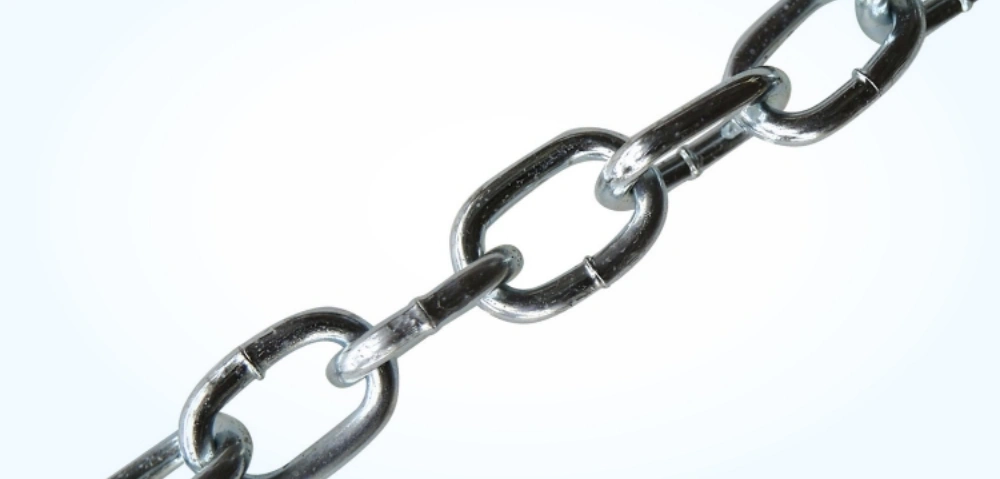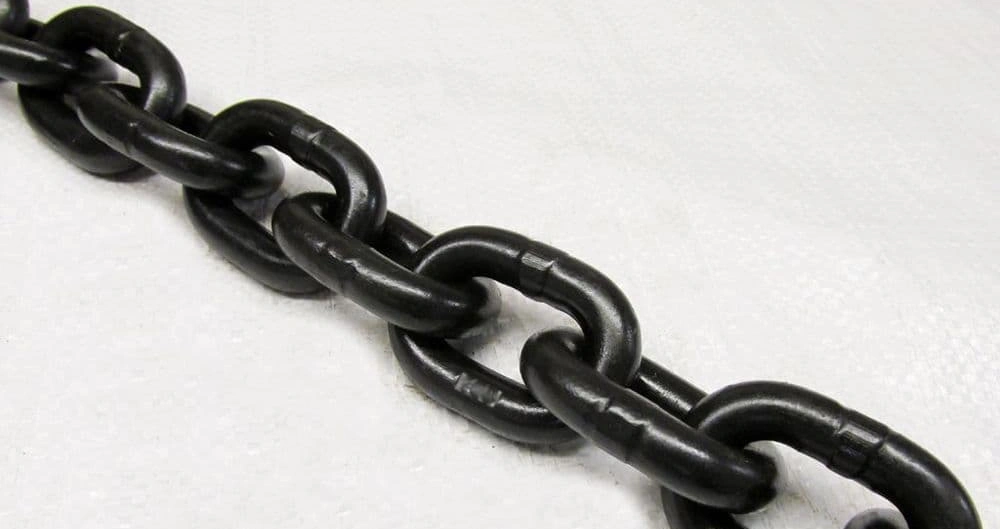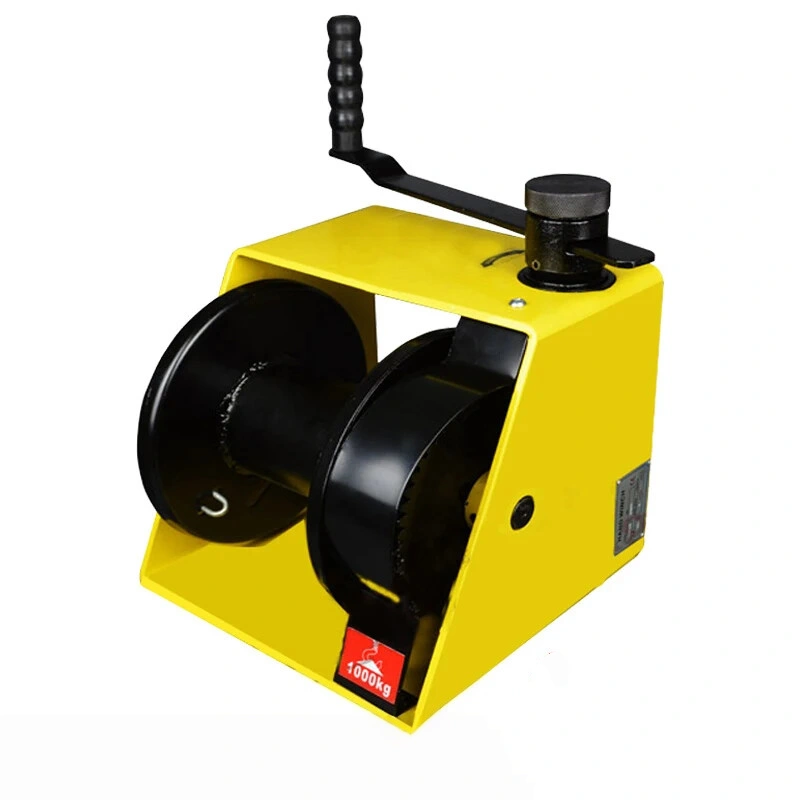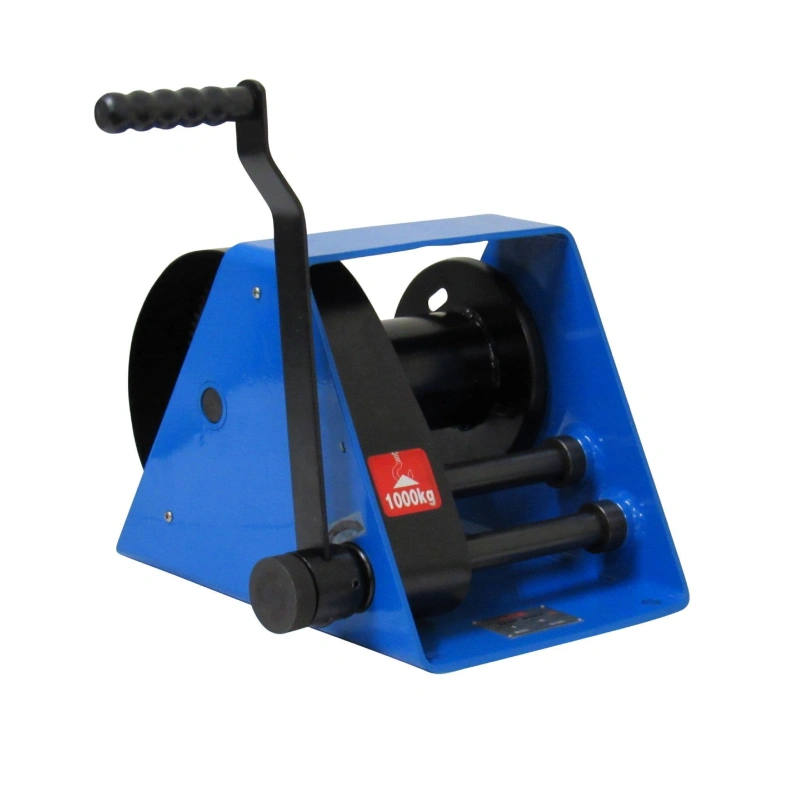Comparing Key Features of Chains
Explore the differences between passing and straight link chains.
Features | NACM2010 Passing Link Chain | Straight Link Chain |
|---|---|---|
Material | Low or medium carbon steel | |
Link Shape | Wide, oval links | Uniform, straight links |
Flexibility | Excellent flexibility | Good flexibility |
Tangle Resistance | High tangle resistance | Moderate tangle resistance |
Applications | Utility, farming, industrial | Lifting, towing, general utility |
Ease of Use | Easy to handle | Simple, but can tangle |
Cost | May be higher | Often cost-effective |
Durability | Proof-tested for strength | Durable but may kink |
When you compare a passing link vs a straight link chain, you quickly see that each serves a unique purpose. Passing link chains, like the NACM2010 from Powerful Machinery, offer wide links that reduce kinking and enhance flexibility.
Straight link chains provide a more traditional, uniform link shape and work well for general tasks. For most utility, farming, or industrial needs, you will benefit from the smoother handling and anti-kink design of a passing link chain.
Key Takeaways
Passing link chains feature wide links that prevent kinking, making them ideal for tasks requiring flexibility and smooth handling.
Straight link chains have uniform links, making them cost-effective and easy to measure, suitable for general utility tasks.
Always consider the working load limit (WLL) when selecting a chain to ensure safety and prevent overloading.
Choose passing link chains for ground-level tasks and straight link chains for lifting and towing applications.
Regularly inspect chains for wear and damage to maintain safety and performance in various environments.
Passing Link Chain

Features
You will notice that the NACM2010 Passing Link Chain from Powerful Machinery stands out for its wide links and anti-kink design. These features allow the chain to move smoothly and prevent tangling, which is essential when you need reliable performance.
The chain uses low-carbon steel, giving you a strong yet flexible product. You can choose between bright and zinc-plated finishes, both of which offer protection against wear and corrosion. Some chains in the market also use advanced finishes, such as:
Lambda lube-free coatings for food industry use and high-temperature resistance.
Anti-corrosion technology, like Neptune coatings, which withstand saltwater and harsh environments.
Shot peening treatments that boost resistance to fatigue and corrosion.
Ring coining processes that strengthen connecting links.
The NACM2010 chain is proof-tested with a 4:1 design factor, so you get added confidence in its strength. Customers often praise its toughness and the way it resists kinking, which helps you keep your projects on track.
Uses
Passing link chains excel in many settings where flexibility and smooth handling matter. You will find them especially useful in farming, industrial, and general utility work.
The wide links make it easy to thread the chain through itself or around objects, which saves you time and effort. However, you should not use this chain for overhead lifting.

Here is a quick look at common uses:
Application | Description |
|---|---|
Farming | Ideal for use in farming due to its design that prevents knotting or kinking. |
Industrial Settings | Widely used in various industrial applications for similar reasons. |
You can also use passing link chains for securing loads, towing, or anchoring equipment at ground level.
Pros and Cons
When you compare a passing link vs a straight link chain, you will see clear differences in performance and handling.
Pros:
Wide links prevent kinking and tangling.
Smooth movement makes handling easier.
Multiple finishes improve durability and corrosion resistance.
Proof-tested for strength and reliability.
Positive customer feedback on toughness and ease of use.
Cons:
Not suitable for overhead lifting.
Tip: Always check the manufacturer’s guidelines to ensure you use the chain safely and correctly.
Straight Link Chain

Features
Straight link chains use a classic design with uniform, oval-shaped links connected in a straight line. You often find these chains made from low or medium carbon steel, which gives you a balance of strength and durability.
The links have a consistent size and shape, which makes the chain easy to measure and cut to length. Manufacturers usually offer straight link chains in a variety of finishes, such as zinc-plated or galvanized, to help resist rust and corrosion.
You will notice that straight link chains have a simple construction. This design makes them cost-effective and easy to manufacture. The chain operates smoothly in either direction, and you can use an even number of links for most applications.
However, compared to passing link chains, straight link chains tend to kink more easily when twisted or bent sharply.
Uses
Straight link chains serve a wide range of purposes in industrial, agricultural, and utility settings. You can rely on them for general utility tasks, such as securing tailgates, supporting swing sets, or acting as barrier guards.
Farmers use these chains for equipment and livestock management. Construction crews depend on them for hauling, dragging, and light-duty lifting.
Here is a table that highlights common applications:
Application Type | Description |
|---|---|
General Utility | Use around the home, tailgates, farm, and industrial equipment, swing sets |
Agriculture | Utilized in various farming tasks |
Construction | Employed in construction projects |
Hauling and Dragging | Suitable for hauling and dragging applications |
Farm and Ranch | Useful for farm and ranch applications |
You can see that straight link chains offer versatility for many day-to-day jobs.
Pros and Cons
When you compare a passing link vs a straight link chain, you will see important differences in flexibility and handling.
Pros:
Uniform links make measuring and cutting simple.
Cost-effective due to straightforward manufacturing.
Works well in either direction.
Available in multiple finishes for corrosion resistance.
Cons:
More likely to kink or tangle than passing link chains.
Less flexible when threading through itself or around objects.
Tip: Choose straight link chains for general utility and construction tasks where you need a reliable, budget-friendly option.
Passing Link vs Straight Link Chain
Strength
When you compare strength, you need to look at the materials and design of each chain. Passing link chains, such as the NACM2010, use low-carbon steel and feature wide links. This design gives you reliable strength for utility, farming, and industrial tasks.
Straight link chains also use strong steel, but their uniform links provide consistent load distribution. You will find that both chains offer proof-tested durability.
However, straight link chains often serve in lifting and towing applications where even load distribution is critical. Passing link chains excel in ground-level tasks where anti-kink performance matters more than maximum load rating.
Flexibility
Flexibility plays a major role in how you use each chain. Passing link chains stand out for their wide, oval links. You can easily thread the chain through itself or around objects. This feature prevents kinking and binding, which saves you time and effort.
Straight link chains have a more rigid structure. You may notice that they kink or tangle if twisted sharply. For jobs that require frequent movement or repositioning, passing link chains give you superior flexibility. Straight link chains work best when you need a stable, predictable shape.
Ease of Use
Ease of use depends on how the chain handles during operation. You want a chain that resists tangling and moves smoothly. Passing link chains offer high tangle resistance and excellent flexibility. You can handle them easily, even in demanding environments.
Straight link chains provide simple, straightforward handling, but they may tangle more often. The table below highlights key differences:
Feature | Passing Link Chain | Straight Link Chain |
|---|---|---|
Link Shape | Wide, oval links | Uniform, straight links |
Tangle Resistance | High | Moderate |
Flexibility | Excellent | Good |
Application | Utility, farm, industrial | Lifting, towing, securing |
Ease of Use | Easy to handle, less tangling | Simple, but can tangle |
Manufacturing | More complex | Easier |
Cost | May be higher | Often cost-effective |
Tip: If you need a chain that moves smoothly and resists tangling, choose a passing link chain. For basic tasks where cost matters most, a straight link chain may suit your needs.
Applications
You should match the chain type to your specific job. Passing link chains work best for utility, farming, and industrial tasks where flexibility and anti-kink design are important. You can use them for securing loads, anchoring equipment, or towing at ground level.
Straight link chains fit lifting, towing, and securing jobs that require uniform strength and predictable handling. You will see straight link chains in construction, agriculture, and general utility work.
Here is a quick comparison of best-fit scenarios:
Passing Link Chain:
Securing loads
Anchoring equipment
Utility and farm tasks
Industrial use where smooth movement is needed
Straight Link Chain:
Lifting and towing
Barrier guards
Construction projects
General utility tasks
When you consider a passing link vs a straight link chain, think about your environment and the demands of your project. The right choice will help you work safely and efficiently.
Choosing the Right Chain
Load and Strength
When you select a chain, you must consider the working load limit (WLL). This value tells you the maximum weight the chain can safely handle. Manufacturers calculate WLL by dividing the minimum breaking load by a safety factor.
You should always choose a chain with a minimum breaking force at least four times higher than your required working load. For heavy-duty tasks, such as securing large equipment or industrial loads, you may need chains like Grade 80 or 100.
Always check regulatory requirements from organizations such as the Department of Transportation (DOT) or the Commercial Vehicle Safety Alliance (CVSA).
Key points to consider:
Weight and type of cargo
Regulatory standards
Tip: Never base your selection only on the working load. Always factor in safety margins.
Environment
Environmental conditions play a major role in chain performance. Moisture, humidity, and temperature can affect durability and reliability. For humid or corrosive environments, stainless steel or galvanized chains offer better resistance.
Standard alloy steel chains work well in most industrial settings, but you should consider specialty coatings for extreme conditions.
Environmental Factor | Impact on Performance |
|---|---|
Moisture | Can clog dry lubricants and cause corrosion |
Temperature | High heat may degrade fluid lubricants |
Humidity | Reduces the effectiveness of solid lubricants |
Chains exposed to water or chemicals require regular maintenance and specialty lubricants to prevent washout and corrosion.
Application Match
You must match the chain type to your specific application. Passing link chains excel in utility, farming, and industrial settings where flexibility and anti-kink design are important. Straight link chains work best for lifting, towing, and securing loads that need uniform strength.
When comparing a passing link vs a straight link chain, consider how often you need to reposition the chain and whether smooth movement is critical for your job.
Selection Checklist
Use this checklist to guide your decision:
Identify the equipment and application needs.
Determine if you need power transmission or conveyor chain.
Use manufacturer tools, such as the CHAIN WIZARD, for complex selections.
Consider environmental factors like moisture and temperature.
Review regulatory requirements for your industry.
Choose the appropriate chain grade and finish.
Confirm the working load limit and safety factor.
Note: Following a step-by-step procedure ensures you select the right chain for your project and environment.
Common Mistakes
Misidentification
You may encounter errors when identifying chain types in the field. These mistakes can lead to safety risks and operational delays. Common issues include:
Personal errors, such as misreading chain markings or choosing the wrong chain for the job.
Instrumental errors, like using chains with worn or stretched links that affect length and strength.
Natural errors, including temperature changes that cause chains to expand or contract.
Errors due to sag, which happen when chains droop between two points and give inaccurate measurements.
Alignment errors, where improper positioning leads to skewed results.
Always verify the chain type and condition before use. Accurate identification helps you avoid costly mistakes and ensures the chain matches your application.
Overloading
Exceeding the working load limit (WLL) is a critical mistake with both passing link and straight link chains. Staying within the WLL keeps your equipment and personnel safe.
Overloading can cause chain failure, cargo damage, or even injury. You should inspect chains before each use and avoid exposing them to extreme temperatures or corrosive environments. The following table highlights key warnings:
Warning Type | Description |
|---|---|
Working Load Limit | Exceeding WLL risks damage, injury, or death. |
Chain Inspection | Always inspect for damage before use. |
Environmental Exposure | Avoid harsh conditions that weaken chains. |
Weakest Link Principle | The chain is only as strong as its weakest link or attachment. |
Never ignore signs of wear or abuse. Real-world conditions, such as bends or twists, can reduce the safety factor and lead to unexpected failures.
Compatibility
Selecting chains and hardware that work together is essential. You must review the working conditions before replacing any chain. Assess factors like speed, load, and humidity. Confirm with the manufacturer that the previous chain was suitable for your application.
Implementing compatibility checks during ordering and enforcing technical specifications helps you avoid mismatched components. Visibility into downstream dependencies ensures you select the right chain for your system.
Safety Tips
Follow these safety tips to minimize risks with passing link and straight link chains:
Never exceed the working load limit for any chain.
Avoid shock loads by preventing jerking or swinging motions.
Inspect chains frequently for wear, damage, or deformation.
Destroy any defective chain to prevent accidental reuse.
Important: Never use passing link chains for overhead lifting. Always match the chain type to your specific task and environment to maintain safety and efficiency.
Conclusion
You now understand the key differences between passing link and straight link chains. Passing link chains use low-carbon steel and wide links to prevent kinking, making them ideal for tasks like overhead doors, porch swings, and animal ties.
Straight link chains offer uniform strength for general utility. Always match your chain to the job. For unique needs, review product specs such as NACM2010 or consult resources like the Supply Chain Network and UL Product iQ®.
Feature | Description |
|---|---|
Material | Low carbon steel |
Design | Short, wider links to prevent kinking or tangling |
Applications | Overhead doors, porch swings, animal ties, and light industrial duties where a twistless feature is needed |
For complex projects, seek guidance from supply chain professionals or certification databases to ensure the best fit.
FAQ
What is the main difference between passing link and straight link chains?
Passing link chains have wide, oval links that prevent kinking. Straight link chains use uniform, straight links that can kink more easily. You should choose based on your need for flexibility or uniform strength.
Which chain is better for preventing tangling?
You will find that passing link chains resist tangling much better. Their wide links allow smooth movement and reduce the chance of knots. Straight link chains may tangle if twisted or bent sharply.
Can I use both chain types for overhead lifting?
No. You should never use passing link chains for overhead lifting. Straight link chains may be suitable if rated for lifting, but always check the manufacturer’s specifications and safety guidelines.
Which chain lasts longer in harsh environments?
Chains with corrosion-resistant finishes, like zinc-plated or galvanized, last longer in harsh conditions. Both passing link and straight link chains offer these options. Always select the finish that matches your environment.
How do I choose the right chain for my project?
Start by listing your application, load requirements, and environment. Use a table to compare features:
Feature | Passing Link Chain | Straight Link Chain |
|---|---|---|
Flexibility | High | Moderate |
Tangle-Resistant | Yes | No |
Overhead Lifting | No | Sometimes |
Tip: Always match the chain type to your specific job for best results.


